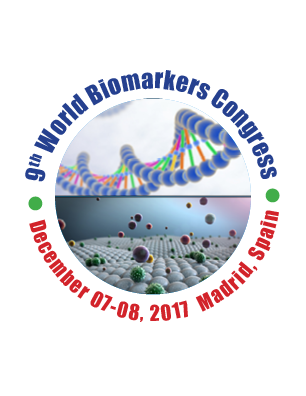
M Al Hassan
Beirut Arab University, Lebanon
Title: Soarfenib effect on human colon cancer cells HCT116 and HCT116 p53-/-
Biography
Biography: M Al Hassan
Abstract
Sorafenib, a kinase inhibitor, has been approved among the drugs for the treatment of radioactive iodine resistant thyroid carcinoma, primary kidney and liver cancer. Reported targets of sorafenib include VEGFR, af family, and PDGFR belonging to the general class of tyrosine kinases. Blocking growth signals in kidney and breast cancers underlie one of the mechanisms of sorafenib antitumor effects’ leading to cell death. We hereby examine the effect of sorafenib on human colon carcinoma cell-line HCT116. We also investigate the possible role of p53 in mediating this eff ect using mutant HCT116 p53-/- cells. Cultured wild and mutant cells are treated with sorafenib (0-75μM) for 24 hr. Th is is followed by assessing the viability of cells using MTT and trypan blue exclusion assays. We also examined if sorafenib mode of action is mediated by ROS. Levels of ROS were determined in the presence and absence of antioxidants using the colorimetric NBT assay. Our preliminary results show a concentration dependent decrease in viability (trypan blue) with an estimated EC50 of 10 and 25 μM for HCT116 and HCT116 p53-/- respectively. Compared to trypan blue, MTT results were similar in case of HCT116 p53-/- but were signifi cantly diff erent with HCT116. Furthermore we obtained a significant increase in level of ROS of: 37.11% and 31.30% for HCT116 and HCT116p53-/- respectively. However, 2 hr. pre-incubation of cells with antioxidants, Trolox, N-acetylcysteine (NAC), and catalase, prior to sorafenib treatment, exerted no diff erent eff ect. No restoration of viability or decrease in generated ROS level was noted. Our preliminary fi ndings show that sorafenib action is independent of ROS level and p53 expression and further investigations on the mechanism(s) of sorafenib action are ongoing.

